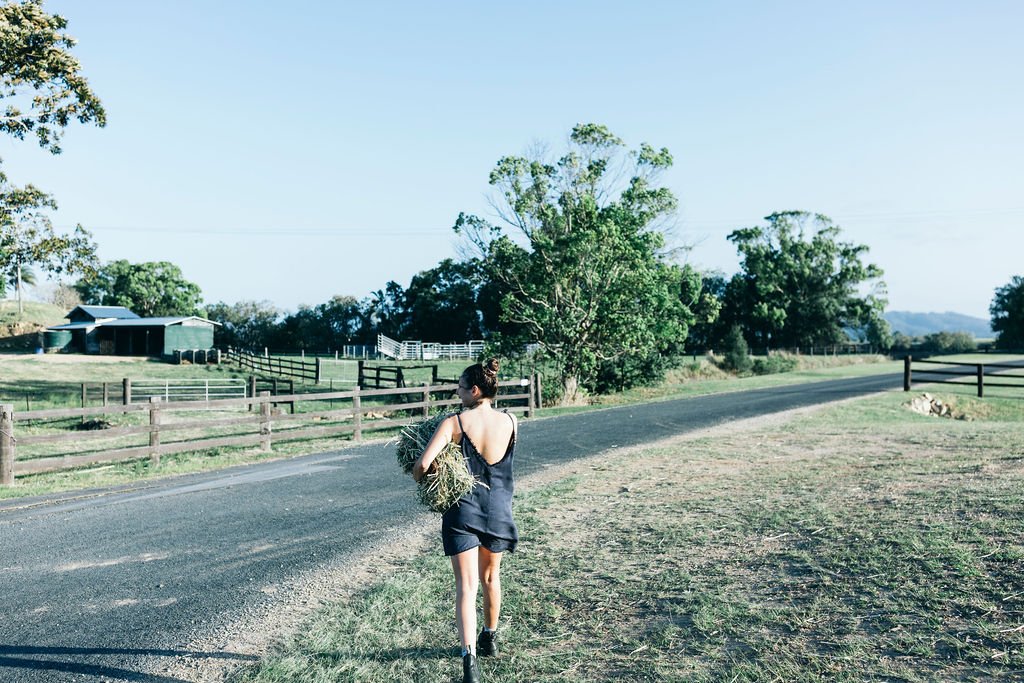The story of Ink Gin, and what's next in 2022.
Colour changing Ink Gin was the brainchild of Paul Messenger, Founder of Husk Distillers. He and his wife Mandy and their 3 daughters have all played various roles since the business began some 8 years ago. Paul and Mandy’s eldest daughter Harriet has been an influential part of the family business from the get-go. From bottling the very first bottles of Ink Gin alongside her Grandma, fast forward to today, she is now the General Manager of Hospitality and Marketing.
Harriet recently caught up with Charlie from GinBiz to talk all things Ink Gin, and what’s to come. Tune in below.
Ink Gin is one of Australia’s most recognisable gins - when Husk Distillers began, did you imagine that it would become so popular?
No! The success of Ink took us totally by surprise. It was a very left field concept for a gin in both look and taste particularly at the time we released it, when there were only a couple of craft gins on the market – and no coloured or infused ones. The recipe development was driven by a sincere drive to be completely original and unconventional. Most brands start with a core gin product that is clear and classic, so we didn’t know how Ink was going to be received. All we knew was we thought it looked and tasted incredible. Luckily other people didn’t think it was too weird and loved it as much as we did.
Where did the idea to use Butterfly Pea originate? Were you specifically looking for something to add an eye-catching look to the gin?
We were looking for an unusual botanical that hadn’t been used before. As Aussie Gins weren’t yet a category when we first started experimenting, there was a lot of untapped inspiration to be found in our wider backyard of Australia, the Pacific and SE Asia. We came across the butterfly pea in a Thai herbal tea. When we realised that tonic water was acidic and would change the pH and the colour of the gin to pink, it was a eureka moment.
You’re surrounded by a wealth of Australian botanicals in Northern NSW - how has your location shaped your distillery and gins?
It has an impact on everything that we do for both Ink Gin and Husk Rum. We have 12 hectares of ancient rainforest on our farm, so it’s a source of endless inspiration. Lemon myrtle was always going to be a core botanical in our first gin – it grows feet away from the distillery.
What has been your biggest challenge in distilling? And what’s the best lesson you’ve learnt from it?
A big challenge has been seasonality in botanicals and scarcity of ingredients. For instance, if the Tasmanian pepper berry growers have a bad season it becomes really challenging to maintain the flavour profile of Ink, so we’ve had to focus on managing suppliers and ingredients. There are a bunch of cool botanicals we’d love to use in future recipes, but we can’t because we can’t secure enough supply of quality ingredients.
What are some things you love about the Australian gin industry?
The colourful characters and the incredible flavours and quality of spirits they make. Australian distillers push the envelope.
Besides making spirits, what do you hope to accomplish as a distillery?
We live and work in an extremely creative part of the world. Through Ink, we hope to continue to support of the arts with our upcoming Ink Art Gin, ongoing and expanding sponsorship of local galleries and creatives, and hosting special events like the Sculpture Distilled exhibition.
Looking beyond Ink, as a distillery we want to support people & place. We do this through community sponsorships and environmental initiatives. At the end of the day we’re producing a ‘pleasure product’ – it’s not essential, and neither is the waste that comes along with a non-essential consumer product so we want to tread lightly on the earth and not contribute extra waste. We scrutinize all our waste streams and are constantly improving them. After working with Strangelove we were the first distillery in Australia to implement kegged mixers, removing tens of thousands of glass bottles from circulation each year. Our cellar door spirits are stored in bulk and drawn down as needed from recycled spirit bottles, so there’s no waste there. All our organic waste from production is composted, fed to the cattle or used by the bar and kitchen to make syrups or value-added products like jams and sauces. We have 300,000L of rainwater storage which feeds our chiller and flushes the distillery loos. We grow our own garnishes, greens, and some veggies, and have planted thousands of native trees and shrubs since 2017. This week we’ve implemented a new system that enables all food scraps from the kitchen service – including meat bones, dairy, seafood and greasy napkins – to be composted. Our cardboard waste is shredded and used to pack wholesale orders. There’s always heaps more to do but we’re working on new things all the time.
Harriet off to feed the cattle!
It’s amazing to see how your distillery has grown and the culture you have cultivated with the public - what’s the most important aspect of making your cellar door such an enticing experience.
That is very lovely of you to say 😊 I would say one of the most important things is our passionate and highly educated team, who are part of our extended Husk family and make all our guests feel so welcome and at ease, while subtly dropping knowledge about our story and products. The other special thing is the setting of the distillery itself. When you drive through the front gates and the farm opens to you, you can feel the love, care, and consideration that Lou our horticulturalist and Mandy our co-founder continue to pour into the design and care for the venue and grounds. It’s just a beautiful place to drink beautiful spirits.
Is there anything on the horizon for you we should be looking out for?
After 6 years in the market, Ink Gin is going through a subtle brand refresh later this year. Our packaging is evolving to be even more beautiful, so keep your eye out… We will also have a new product release later in the year which will be the Ink Art Gin, featuring an insanely cool piece by Australian artist Brian Connolly. Stay tuned for more info on the concept behind this mystery liquid…
The Messenger family on their family farm, home of Husk Distillery in Tumbulgum NSW.



